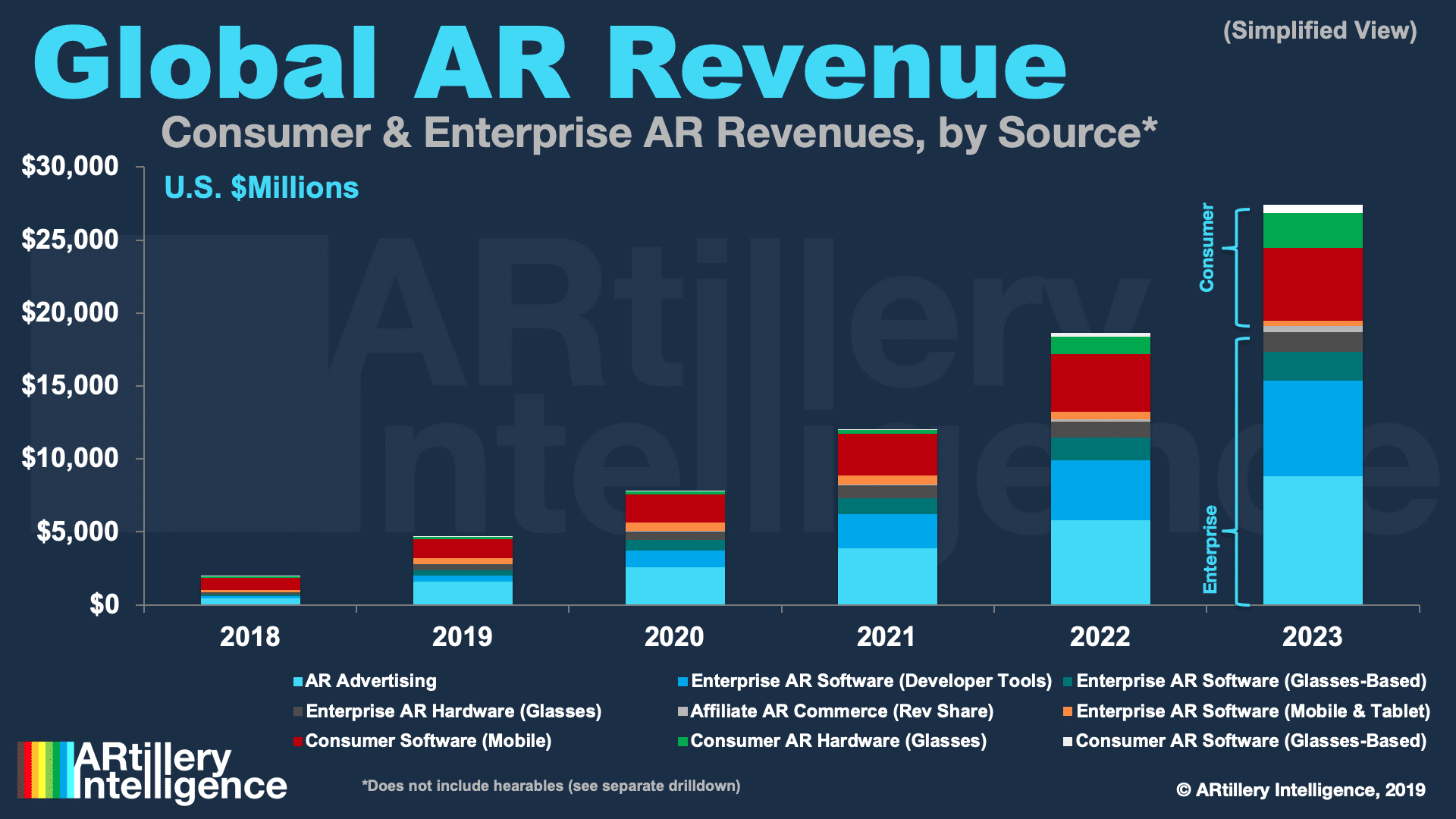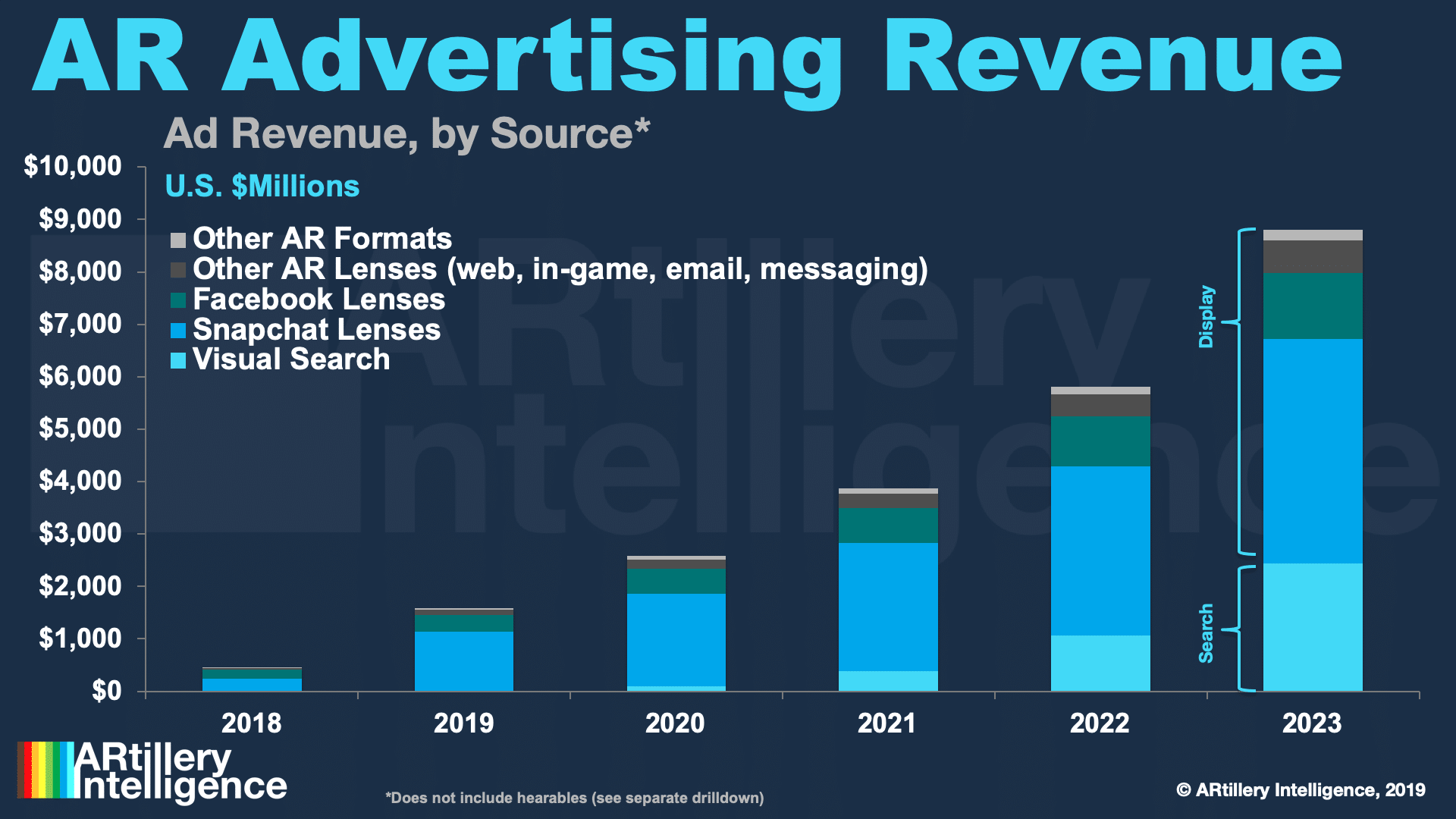
This post is adapted from ARtillery Intelligence’s report, Spatial Computing: 2019 Lessons, 2020 Outlook. It includes some of its data and takeaways. More can be previewed here and subscribe for the full report.
At this stage of spatial computing’s lifecycle, it’s becoming clear that patience is a virtue. After passing through the boom and bust cycle of 2016 and 2017, the last two years were more about measured optimism in the face of the sobering realities of industry shakeout and retraction.
At the precipice of 2020, that leaves the question of where we are now? Optimism is still present but AR and VR players continue to be tested as high-flying prospects like ODG, Meta and Daqri dissolve. These events are resetting expectations on the timing and scale of revenue outcomes.
But there are also confidence signals. 2019 was more of a “table-setting” year for our spatial future and there’s momentum building. Brand spending on sponsored mobile AR lenses is a bright spot, as is Apple AR glasses rumors. And Oculus Quest is a beacon of hope on the VR side.
To synthesize where we are and where we’re going, our research arm ARtillery Intelligence has published its annual year-end recap and year-forward outlook. This includes five predictions, listed below. Following our deep dive on #1 and #2, today we’ll drill down on #3.
1. Apple Glasses Don’t Arrive in 2020
2. AR Wins With “Training Wheels”
3. Advertising Keeps the AR Revenue Crown
4. Industrial AR’s Inflection is Still One Year Away
5. VR Has an Evolutionary (not revolutionary) 2020

Prediction 3: Advertising Keeps the AR Revenue Crown
Advertising is currently AR’s revenue leader, with $453 million spent in 2018, growing to $8.8 billion by 2023 according to our projections. This is dominated by AR lenses in social channels, but other formats like visual search will gain share over time as Google pushes the technology.
Based on its current momentum – and the continued barriers faced by other AR sub-sectors – Advertising will continue to hold the revenue crown in 2020. Snapchat will maintain its leading position among AR lens providers, despite Facebook’s greater global scale and reach.
Snapchat’s lead results from dedicated focus on lenses as a user engagement feature, and a tool for advertisers to demonstrate products in immersive ways. Lens formats will continue to be dominated by front-facing camera (selfie) activations, but rear-facing lenses will gain share.
Facebook’s AR advertising ambitions will be boosted by Instagram’s entrance to the AR lens competitive field. This will be a natural activity for camera-forward Instagram users, and will dovetail well with Instagram’s existing use case as a product and fashion discovery tool.
Instagram’s edge in AR advertising will be this user behavior, combined with its execution in infusing more transactional capability. The latter is a phenomenon that’s already underway on Instagram and is on a convergence path with AR. Instagram will lean into this synergy.

Boiling it Down
Boiling down all of the above into a concrete prediction, it will be revealed in 2020 that AR advertising revenues exceded $1.5 billion in 2019. 2020 revenues will meanwhile approach $2.6 billion. AR lenses in social channels will maintain their leading position in that revenue mix.
But notably, Google will begin to monetize visual search as a high-intent (and thus high-premium) ad format. This will take much more time to develop but will advance in 2020 in incremental ways. Visual search could begin to be monetized in 2020, with most of its growth to come in later years.
Of course all of the above is speculative and based on market signals we’re tracking closely. It will be a moving target, and we’ll course correct as market factors unfold. We’ll also hold ourselves to task in 2020 for all predictions. Stay tuned for more and see the full report here.
For deeper XR data and intelligence, join ARtillery PRO and subscribe to the free AR Insider Weekly newsletter.
Disclosure: AR Insider has no financial stake in the companies mentioned in this post, nor received payment for its production. Disclosure and ethics policy can be seen here.
